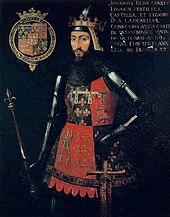Hungerford
When he died in 1118, he passed his English estates, including Hungerford, to his son Robert and his heirs who encouraged the town's growth over the next 70 years.
[8] In the late 14th century, John of Gaunt was lord of the manor and he granted the people the lucrative fishing rights on the River Kennet.
[13] During the Glorious Revolution of 1688, William of Orange was offered the Crown of England while staying at the Bear Inn in Hungerford.
A 27-year-old unemployed local labourer, Michael Robert Ryan, armed with three weapons, a Type 56 assault rifle, a Beretta pistol and an M1 carbine, shot and killed 16 people in and around the town – including his mother – and wounded 15 others, then killed himself in a local school after being surrounded by armed police.
[16] Home Secretary Douglas Hurd commissioned a report on the massacre from the Chief Constable of Thames Valley Police, Colin Smith.
It led to the passing of the Firearms (Amendment) Act 1988, which banned the ownership of semi-automatic centre-fire rifles, and restricted the use of shotguns with a magazine capacity of more than two rounds.
Anciently, the parish was divided into four tithings: Hungerford or Town, Sanden Fee, Eddington with Hidden and Newtown, and Charnham Street.
[18] Hungerford & Kintbury electoral ward, which includes eight rural parishes to the east,[19] elects three members of West Berkshire Council (a unitary authority).
The highest point in the entire South East England region is the 297 m (974 ft) summit of Walbury Hill, 4 miles (6.4 km) from the town centre.
[22] Hungerford is situated on several transport routes, including the M4 motorway with access at Junction 14, the Old Bath Road (A4), and the Kennet and Avon Canal, the latter opened in 1811.
Hungerford Archers, an archery club, uses the sports field of the John O'Gaunt School as its shooting ground.
[clarification needed] There is an old legend that "Hingwar the Dane", better known as Ivarr the Boneless, was drowned accidentally while crossing the Kennet here, and that the town was named after him.
[citation needed] Hungerford is one of two places which arguably meet the criteria for Kennetbridge in Thomas Hardy's novel Jude the Obscure, being "a thriving town not more than a dozen miles south of Marygreen"[28] (Fawley) and is between Melchester (Salisbury) and Christminster (Oxford).




